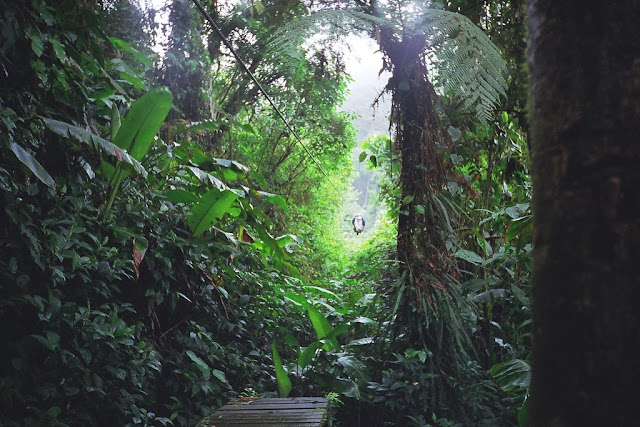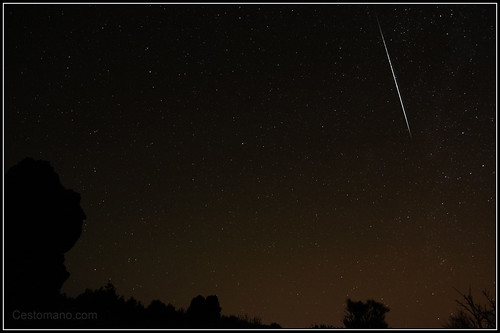If I had to name my biggest frustration with the nature around DC, the lack of good swimming holes might top the list. Until 7th grade I lived down the road from a little lake -- and went swimming as often as possible. It's something I deeply associate with summer: there's nothing like jumping into the lukewarm, murky, un-chlorinated water, with fish nipping at your toes.
And so, as swimming season rapidly comes to a close, I've done a little research on places to go. There's nothing that I've been able to find inside the beltway -- at least nothing legal. But listed below are 15 swimming spots that would make a short day trip from Washington, DC. A few are just under an hour's drive from the Capitol. Let us know if you have more to add to the list!
Why no swimming inside the beltway? We have plenty of creeks and rivers running through the city, but they're horribly polluted and often not deep enough for a real swim. The Chesapeake Bay and its tributaries can have bacteria levels
six times more concentrated than an unflushed toilet. Which leads me to ask: why haven't the people of the DC area risen up to fight for clean, swimmable rivers? Even in these more far-flung locations, call first to make sure they haven't been closed for the day for bacterial contamination -- especially if it has rained recently.
View Natural Swimming Spots (Somewhat) Near Washington DC in a larger map
Sandy Point State Park in Annapolis offers swimming from the west side of the Bay. In addition to the whole pollution issue, there may be jellyfish. But it's close! Crabbing and fishing are also allowed here; some supplies are available at the marina.
Distance from US Capitol: 38 miles/ 51 mins
1100 East College Parkway
Annapolis, MD 21409-6149
(410) 974-2149
Admission: weekends $5, weekdays $4 per person for Maryland residents -- $1 more for non-Maryland residents
Patapsco Valley State Park allows swimming in the Patapsco River, unless otherwise posted (e.g., not in rapids or near dams).
2090 Daniels Rd
Ellicott City, MD
Distance to US Capitol: 41 miles / 55 mins
Hours: 9am to sunset
Admission: $2/person
Millford Mill Park and Swim Club has a quarry with zip lines and rope swings as well as a swimming pool.
3900 Milford Mill Road
Windsor Mill, MD 21244-3868
(410) 655-4818
Distance from US Capitol: 44 miles / 1 hour
Hours: Sunday-Friday noon-6:30, Saturday 10:30-6:30
Admission, ages 12+: weekends $13, weekdays $11
Admission under 12: weekends $13, weekdays $6
Acquia Landing is a popular little beach that also served as an important supply spot during the Civil War. The park also includes marshland that can make for good birdwatching; it's part of the Virginia Birding and Wildlife Trail.
Brooke Road, outside Fredericksburg
Distance from US Capitol: 52 miles / 1 hour 16 mins
Admission: $4.50 Youth & Seniors; $6.50 Adults)
Beaver Dam Swimming Club is an old marble quarry which has a rope swing you can use, but you're no longer allowed to dive off the rocks. The swimming club also includes two swimming pools, grills, basketball courts, and other amenities.
10820 Beaver Dam Rd
Cockeysville, MD 21031
410-785-2323
Distance to US Capitol: 55 miles / 1 hour 17 min
Summer hours: Weekdays 11am-6:30pm; Weekends & Holidays 11am-7pm
Admission Ages 12+: Mon - Sat $14, Sun & Holidays $16
Admission Under 12: $10
Gunpowder Falls State Park offers sanctioned swimming at a beach in its Hammerman area, but there are
several other spots that people jump in the river.
Middle River, Maryland 21220
(410) 592-2897
Distance to US Capitol: 55 miles / 1 hour 20 mins
Hours: 8am to sunset
Admission: $3 for Maryland residents; $4 non-residents
Oregon Ridge Park is a Baltimore County-owned park that includes a spring-fed swimming quarry.
13401 Beaver Dam Road
Cockeysville, MD 21030-1530
(410) 887-1818
Distance to US Capitol: 57 miles / 1 hour 19 mins
Hours: Weekdays 10am-5:30pm, weekends 10am-6:30pm
Admission ages 12+: $6 weekdays, $7 weekends (discounted after 4pm)
Admission under 12: $3
Rocky Point Beach offers a 300-foot sandy beach at the point where the Back and Middle Rivers meet the Chesapeake Bay.
410-887-0338
Distance to US Capitol: 59 miles / 1 hour 18 mins
Hours: 10am-6pm
Admission ages 12+: $6 weekdays, $7 weekends (discounted after 4pm)
Admission under 12: $3
Greenbrier State Park has a 42-acre lake open for swimming, boating, and fishing. The park also has hiking trails; a portion of the Appalachian Trail passes through.
21843 National Pike
Boonsboro, MD 21713-9535
301-791-4767
Distance to US Capitol: 64 miles / 1 hour 28 mins
Hours: 8:00 a.m. - 8:00 p.m.
Admission: weekdays $3 per person, weekends/holidays $5 per person
Greenwell State Park along the Patuxent offers two beaches for swimming in the river. The park also has 10 miles of trails, including 2 miles along the river.
25450 Rosedale Manor Lane
Hollywood, MD 20636-2925
(301) 373-2320
Distance from US Capitol: 54 miles / 1 hour 33 mins
Admission: MD residents $3/vehicle; out-of-state residents $4/vehicle
Cascade Lake is a 6-acre lake decked out with a couple of waterslides (one is 150 feet long) and docks. There's also a separate water playground.
3000 Snydersburg Rd
Hampstead, MD 21074
(410) 374-9111
(410) 239-4708
Distance to US Capitol: 66 miles / 1 hour 34 mins
Summer hours: Weekdays 10am-6pm; Weekends 10am-7pm
Admission Ages 5+: $8 weekdays ($6 after 2pm), $12 weekends
Admission Under 5: $6 weekdays, $10 weekends
Cunningham Falls State Park includes three swimming spots on 44-acre Hunting Creek Lake. I've also seen people playing in the water around the actual Cunningham Falls, but it's not officially sanctioned. The park also offers trails and camping.
14039 Catoctin Hollow Road
Thurmont MD 21788
301-271-7574
Distance to US Capitol: 70 miles / 1 hour 38 mins
Admission: weekdays $3, weekends $4
Elizabeth Furnace is a lovely area in George Washington National Forest; there are several
unofficial swimming holes there.
Distance to US Capitol: 82 miles / 1 hour 47 mins
No admission fee.
Overall Run is a popular Shenandoah National Park destination for hikers from the DC area because of the pools you can jump in when you're done hiking.
Distance to US Capitol: 82 miles / 1 hour 46 mins
Lake Anna State Park is one of the largest lakes in Virginia, at 13,000 acres. Nonetheless, the parking lot fills up quickly on summer weekends; you may need to arrive before the lake opens to be able to swim. The park also offers trails, camping, and cabins.
6800 Lawyers Road
Spotsylvania, VA 22551-6404
(540) 854-5503
Distance to US Capitol: 84 miles / 1 hour 46 mins
Weekends and holidays: 10 a.m.-7 p.m.; weekdays 10am-4pm
Admission, ages 13+: weekdays $3, weekends $4
Admission under 13: weekdays $2, weekends $3
Have an opinion about one of these spots, or one to add to the list? Leave us a comment!



























